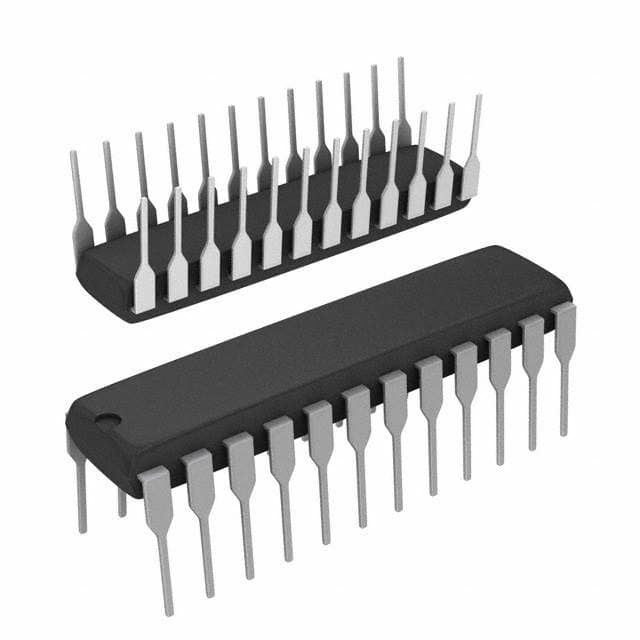Lihat spesifikasi untuk detail produk.

STP16C596B1R
Product Overview
Category
The STP16C596B1R belongs to the category of integrated circuits (ICs) specifically designed for driving LED displays.
Use
This product is primarily used for controlling and driving LED displays in various applications such as digital signage, scoreboards, and electronic billboards.
Characteristics
- The STP16C596B1R is a high-performance LED driver IC with 16 output channels.
- It supports both static and dynamic display modes, making it suitable for a wide range of LED display applications.
- This IC offers excellent accuracy and reliability in driving LED segments or matrices.
- It is compatible with a variety of microcontrollers and can be easily integrated into existing systems.
- The STP16C596B1R operates at a low voltage, making it energy-efficient and suitable for battery-powered devices.
Package and Quantity
The STP16C596B1R is available in a compact and industry-standard package, such as a 24-pin SSOP (Shrink Small Outline Package). It is typically sold in reels containing a quantity of 2500 units.
Specifications
- Supply Voltage: 3.0V to 5.5V
- Output Current per Channel: Up to 120mA
- Maximum Clock Frequency: 30MHz
- Operating Temperature Range: -40°C to +85°C
- Package Type: SSOP-24
Detailed Pin Configuration
The STP16C596B1R has a total of 24 pins, each serving a specific function. Here is a detailed pin configuration:
- GND: Ground
- VDD: Power Supply Voltage
- SDI: Serial Data Input
- CLK: Clock Input
- LE: Latch Enable Input
- OE: Output Enable Input
- OUT0-OUT15: LED Output Channels
- GND: Ground
- VDD: Power Supply Voltage
- SDI: Serial Data Input
- CLK: Clock Input
- LE: Latch Enable Input
- OE: Output Enable Input
- OUT0-OUT15: LED Output Channels
- GND: Ground
- VDD: Power Supply Voltage
- SDI: Serial Data Input
- CLK: Clock Input
- LE: Latch Enable Input
- OE: Output Enable Input
- OUT0-OUT15: LED Output Channels
- GND: Ground
- VDD: Power Supply Voltage
- SDI: Serial Data Input
Functional Features
The STP16C596B1R offers several functional features that make it a versatile LED driver IC:
- Serial data input allows easy integration with microcontrollers and other digital devices.
- The latch enable input ensures synchronized and accurate data transfer to the output channels.
- Output enable input enables control over the display's on/off state, conserving power when necessary.
- High output current capability allows driving of high-brightness LEDs or multiple LEDs in series.
- Compatibility with both static and dynamic display modes provides flexibility for various applications.
Advantages and Disadvantages
Advantages
- High-performance LED driver with 16 output channels.
- Supports both static and dynamic display modes.
- Excellent accuracy and reliability in driving LED segments or matrices.
- Low voltage operation for energy efficiency.
- Easy integration with microcontrollers.
Disadvantages
- Limited output current per channel (up to 120mA).
- Requires external components for proper functionality.
- Relatively higher cost compared to simpler LED driver solutions.
Working Principles
The STP16C596B1R operates based on a shift register and latch architecture. It receives serial data input, clock signals, and control signals from a microcontroller or other digital devices. The received data is then latched and transferred to the output channels, controlling the state of connected LEDs. By manipulating the input data and control signals, the IC can achieve various display effects and patterns.
Detailed Application Field Plans
The STP16C596B1R finds applications in a wide range of fields, including:
- Digital Signage: Controlling LED displays for advertising and information dissemination.
- Scoreboards: Driving LED segments to display scores and game information in sports arenas.
- Electronic Billboards: Illuminating large outdoor displays with vibrant and dynamic content.
- Automotive Displays: Controlling LED indicators and instrument clusters in vehicles.
- Consumer Electronics: Powering LED displays in televisions, monitors, and home appliances.
Detailed and Complete Alternative Models
While the STP16C596B1R offers excellent performance, there are alternative models available in the market that cater to different requirements. Some notable alternatives include:
- MAX7219: A popular LED driver IC with cascading capabilities and
Sebutkan 10 pertanyaan dan jawaban umum terkait penerapan STP16C596B1R dalam solusi teknis
Sure! Here are 10 common questions and answers related to the application of STP16C596B1R in technical solutions:
Q1: What is STP16C596B1R? A1: STP16C596B1R is a serial-in, parallel-out LED driver IC that can control up to 16 LEDs or other low-voltage devices.
Q2: What is the maximum voltage rating for STP16C596B1R? A2: The maximum voltage rating for STP16C596B1R is typically around 5.5V.
Q3: How many LEDs can be controlled by STP16C596B1R? A3: STP16C596B1R can control up to 16 LEDs individually.
Q4: Can STP16C596B1R drive high-power LEDs? A4: No, STP16C596B1R is designed to drive low-voltage devices such as LEDs with a typical forward voltage of around 2-3V.
Q5: What is the communication interface used by STP16C596B1R? A5: STP16C596B1R uses a serial communication interface, specifically a shift register, to receive data and control the output pins.
Q6: Can STP16C596B1R be cascaded to control more than 16 LEDs? A6: Yes, multiple STP16C596B1R ICs can be cascaded together to control a larger number of LEDs.
Q7: What is the maximum clock frequency supported by STP16C596B1R? A7: The maximum clock frequency supported by STP16C596B1R is typically around 30 MHz.
Q8: Does STP16C596B1R have built-in current limiting for LEDs? A8: No, STP16C596B1R does not have built-in current limiting. External resistors are required to limit the current through the LEDs.
Q9: Can STP16C596B1R be used with both common anode and common cathode LEDs? A9: Yes, STP16C596B1R can be used with both common anode and common cathode LEDs by configuring the output pins accordingly.
Q10: What is the typical power supply voltage range for STP16C596B1R? A10: The typical power supply voltage range for STP16C596B1R is between 3V and 5.5V.
Please note that these answers are general and may vary depending on the specific datasheet and application requirements of STP16C596B1R.

